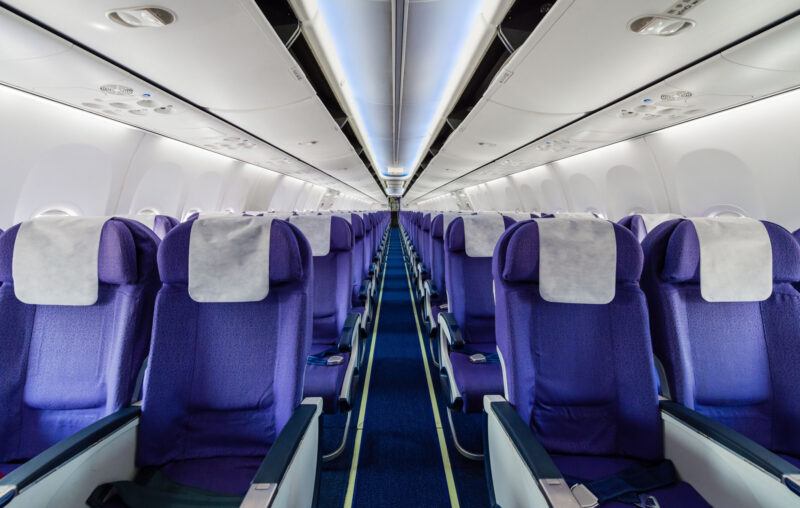
Thousands of passengers this holiday season bought plane tickets for short-hop flights, only to find their journeys had been converted to bus tickets overnight. Thousands more were stranded as major carriers canceled up to 10 percent of their daily flight schedules.
A pilot shortage is the primary complaint. Short-haul flights are grounded by aggressive hiring at large national airlines, leaving regional partners stranded by lack of staff. Fortunately, those hops are routes likely to be replaceable by chartered bus routes, often without much additional travel time.
Airlines received $54 billion in pandemic relief, aimed in part at avoiding layoffs and sustaining staffing levels despite low passenger counts. But the unprecedented crash in demand led many airlines to offer experienced pilots buyouts or early retirement. Training schools also stalled during that time, choking the already-bottlenecked pipeline. Consulting firm Oliver Wyman estimates a current deficit of 8,000 pilots (a shortfall of 11 percent of the total profession) which may surpass 30,000 by 2025.
To keep up with growing demand (leisure travel is back at 2019 heights, and business travel is quickly recovering) airlines need an average of 14,500 new pilots each year until 2030, and there simply aren’t enough in the pipeline. Even the US Air Force is having trouble finding qualified pilots, despite offering “aviation bonuses” of $35,000 annually, often payable in advance. Recruitment shortfalls also result in fewer pilots coming out of military training into civilian jobs.
The training required to become a commercial pilot is substantial, and tends to be bumped up as a reactionary measure after airline accidents. Congress reacted to the Colgan Air 3407 crash in 2009 (which killed 50 people) by establishing a “1,500 hour rule” for minimum training, even though both pilots aboard that day had surpassed that requirement. Previously, commercial pilots’ licenses could be obtained with just 250 hours of flight time, one sixth of the new requirement. Thousands of pilots had fewer than 1,500 hours when the legislation went into effect, and were put on leave until they could get the extra hours. Many never did. For everyone else, the time and personal cost to become a commercial pilot multiplied.
The Air Line Pilots Association (ALPA) reports that Airline Transport Pilot Certificates (which require the 1,500 flight hours) are being issued at a pace that will replace retiring pilots, but will not account for growth in demand. What’s more, airlines have already curtailed their regional service to smaller airports, the historic training ground for new pilots.
Reducing the number of flights per day, while a handy way for airlines to cut costs, also reduces the number of training opportunities for new and existing pilots, who must conduct a minimum number of takeoffs and landings to become and remain credentialed. An industry trend toward retiring older aircraft also requires retraining pilots to be certified on newer models, which takes four to six weeks. When airlines scale up or down the capacity of their planes, a training backlog forms quickly. Even once a new hire is ready, Designated Pilot Examiners (DPEs) who can certify a student pilot, may be booked months in advance. There are just 950 federally certified DPEs, and the average examiner works part time, providing 63 tests a year. While safety standards must be upheld, the regulatory choke points are significant.
Airlines have taken matters into their own hands, with in-house flight schools run by individual carriers. The programs offer financial assistance (training costs can surpass $100,000 and the onboarding process takes two years) and United’s program is reportedly processing 40-70 new hires each month. Delta Airlines joined others in dropping the requirement that pilots hold bachelor’s degrees. Frontier began aggressively recruiting already-trained pilots abroad, offering a special E-3 visa.
Pay premiums for pilots may draw some back into the industry, or encourage new would-be pilots to join the pool. Starting pay for US airline pilots hovered around $35,000 a year in 2015, but has risen to $50,000 in 2022. Regional airlines, who act as a training farm system for national carriers, were fighting for pilots, offering increasing sign-on bonuses and reduced-rate loans for training, which is paid by the trainee pilot. The mandatory retirement age of 65 also curbs supply by forcing senior pilots out of their cockpits regardless of capability. President Bush had just signed a bill in 2007 raising that age from 60 years to 65, after proponents pointed out that up to 200 pilots were being forced to retire each month.
What does this shortage bode for the future? Worse service for air travelers. Price-conscious airlines like Spirit and Southwest will have trouble competing for the limited pilot pool, putting their business model in jeopardy. Small airlines have struggled for at least five years, with Horizon Air canceling hundreds of flights and Republic Airlines filing for bankruptcy in 2018, both citing the dearth of qualified pilots. SkyWest dropped service to 29 smaller airports, despite subsidies from the federal Essential Air Service program.
Shortages of pilots and other staff reduce the resilience in the system, so that a flight crew delayed by a storm or malfunctioning gate can’t readily be replaced. Rest requirements prevent experienced pilots from filling in. Snarls stack up.
It’s unclear whether aircraft fatalities have been reduced by the 1,500 hour rule. Surely it would be politically risky to suggest reducing it, only to have a crash happen shortly after (if not actually as a result). But overzealous regulation of pilot credentialing (by Congress, rather than carriers, insurers, or other stakeholders) have ensured the budget-conscious and the small-town traveler will both be getting a lot less service from airlines.


0 Comments